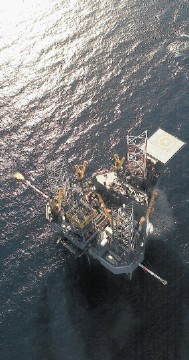
Oh dear, yet another change in the taxation of the North Sea oil and gas market. Last month, George Osborne unveiled further tax breaks to promote more “brownfield” investment, just a year after launching a £2billion tax raid on producers in the UK.
The latest measure means that the income from some mature, brownfield oilfields will be protected from the full impact of the higher supplementary tax charge, introduced last year and is designed to give companies, such as EnQuest and Talisman the incentive to get the most out of their older fields, so generating further tax revenues for the Treasury.
The measure will also lead to the creation of more jobs, in an area of the market where there is already huge demand for skilled workforce. The need for oil and gas personnel has never been greater and with more activity expected in the coming years demand is only set to continue.
The new tax break could attract at least £2billion of investment and one would hope that a concerted effort will be made to encourage those currently out of work to move into an industry which appears to be one of the very few which is continuing to boom.
These changes will have a significant effect on a variety of mature fields, including those that are the subject of complete redevelopment, such as Alma, previously known as Ardmore and before that Argyll, the first oilfield in the UK to come onstream.
But it’s not just tax breaks that enables the revival of such fields; advances in technology are also playing a major role in enabling the development of previously non-commercial discoveries and the revival of abandoned fields such as Alma. Healthy oil prices are a major catalyst too.
There is a growing list of old North Sea oilfields in the same state as Argyll, plus an estimated 340 or so small, undeveloped discoveries.
The key for us is how this asset base is exploited in the coming years, especially so given the flood of funds hitting the North Sea from cash rich National Oil Companies (NOCs) which appear desperate to build on their reserves base.
Much needs to be done to maintain the UK’s competitive edge with the UK having slipped to 19th place of world producers, having at one time been in the Top Five.
Although the super-majors have reduced their exposure to the North Sea there can be no doubt that the second-line, smaller companies continue to thrive by picking up assets cheaply and using new technologies to squeeze more out of existing fields.
A “second wind” of North Sea activity is already under way in our opinion, with businesses such as Ithaca, Xcite and Parkmead, just a few of the names making some significant headway.
I would have included Nautical in that list, except that this company has fallen into Cairn’s hands after the £414million deal earlier this year.
I certainly would not rule out further consolidation in the sector, especially so considering the more recent news of Talisman selling a 49% stake in its North Sea assets to Sinopec and Nexen being acquired by CNOOC subject to regulatory clearance.
We have also seen Kuwait’s NOC re-enter the North Sea market, acquiring a 35% interest in the Alma and Galia oilfield projects at a cost of £300million. In our view this is an important development and we would certainly not rule out further acquisitions by the Kuwait NOC in the months and years ahead.
The increased interest in North Sea assets has encouraged the Department of Energy and Climate Change to step up the recycling of mature licence areas to take advantage of the newcomers and indeed to open up the market to so-called “second liners”, where there is a hive of activity, with this looking likely to continue for the next few years at least.
The re-emergence of historical fields such as Argyll is, in our opinion, just the start of a second wind for the North Sea. Despite some rough treatment from the Chancellor in recent years, activity is likely to remain buoyant for some time to come, which can only come as welcome news to the north-east and wider UK and Scottish economies.
Alan MacPhee is an investment manager at Brewin Dolphin
The opinions expressed in this document are not necessarily the views held throughout Brewin Dolphin Ltd. No director, representative or employee of Brewin Dolphin Ltd accepts liability for any direct or consequential loss arising from the use of this document or its contents.
We or a connected person may have positions in or options on the securities mentioned herein or may buy, sell or offer to make a purchase or sale of such securities from time to time. In addition we reserve the right to act as principal or agent with regard to the sale or purchase of any security mentioned in this document. For further information, please refer to our conflicts policy which is available on request or can be accessed via our website at www.brewin.co.uk
The information contained in this document is believed to be reliable and accurate, but without further investigation cannot be warranted as to accuracy or completeness.